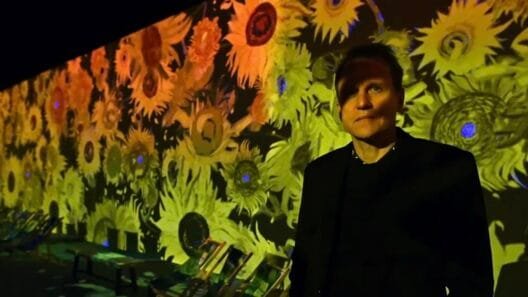A website is often the first point of contact between a prospect and your business in today’s digital world. Statistics shows that web design is responsible for about 95% of visitor’s first impression of your business. The internet is an inherent part of our everyday life, and the appearance of your site cannot be overemphasized as it plays a vital role in attracting and retaining customers and standing out amongst your competitors.
However, modern web design is more than making your website aesthetically appealing. Modern web design ensures your website functions hitch-free to provide an outstanding user experience. It adopts contemporary web techniques, technologies, user behaviors, and recent trends. Many web developers and designers are caught between focusing on creating a visually pleasing design to impress their audience or website functionality to improve usability.
According to a study by Adobe, 38% of prospects will stop engaging a site if its content/layout is unattractive. This highlights the significance of good design and its function in upscaling your business. In this article, we explore functionality and aesthetics in modern web design, the difference between them, how to strike a balance, and the crucial role web development plays in achieving this balance.
Evolution of Web Design
In the early days of the internet, website designs were basic and needed a more explicit framework, with no attention given to usability and aesthetics. In the early 2000s, designers explored color palettes and complex layouts; flashy designs and loads of animations became common. However, as technology advanced and user behaviors and expectations changed, these designs became unattractive.
Over time, the game changed with the rise of mobile devices, and the emphasis moved towards user-centric designs. This change was propelled by the realization that your website’s success isn’t just about visuals but also providing a superb user experience (UX). Designers were challenged to create websites that are pleasing to look at, fun to use, and straightforward to browse on smaller screens.
Modern web design employs interactive and minimalistic approaches to engage users and boost site efficiency. Your website must load quickly, be easy to navigate or use by people with impairments and work smoothly on various devices and screen sizes. It contains images, small clips, or animations to make the application look alive.
Modern users are often pressed for time and attention and require finding what they’re looking for quickly and easily. A survey by Google shows that 74% of people using mobile devices abandon sites that take more than five seconds to load, while 53% of mobile users abandon sites that take longer than three seconds to load.
Current Trends in Modern Web Development and Design
As technology advances and user behavior evolves, web developers are always thinking ahead for ways to adapt to the ever-changing world of web development. Staying informed with the latest web development trends could be the turning point for your website, online presence, and rankings. Here are a few modern web development trends you can keep an eye on:
- The Dark Mode Feature: This feature inverts the color of your website or app to a dark background with light text to minimize eye strain and enhance readability in poorly-lighted environments. The dark mode feature also uses less power, saving energy and extending battery life.
- Responsive Design: Responsive design involves creating web pages that automatically fit the size and resolution of your user’s device. This feature can be achieved using flexible images, grid layouts, and other elements that scale and adjust depending on the device. It helps ensure your website is accessible and user-friendly across many devices.
- Virtual Assistants, Voice Search, and Chatbots: Chatbots and virtual assistants provide an efficient and convenient way for users to interact with a business. They can help improve customer service by answering questions, providing customer support, completing transactions, or automating repetitive tasks. With optimized voice search, your website’s customers can find the information they need easily and quickly.
- Push Notifications: Push notifications are clickable pop-ups while a user is browsing. These pop-ups are a means for you to convey information, such as offers and messages, on any device. It helps to gain users’ attention, increase retention rates, and improve brand visibility. They can also replace common communication ways like emails.
- Single-page Applications (SPAs): SPAs are websites that load all their content on a page instead of reloading the whole page anytime a user interacts with your app or clicks on a new section. This makes the browsing experience smoother without waiting for the website to refresh each time you connect. Also, only the content that has changed since your last visit reloads. Hence, it reduces the amount of data that needs to be transferred and the time it takes for your page to load.
Functionality vs. Aesthetics
Modern web design encompasses two principal elements – functionality and aesthetics – complementing each other to create a seamless user experience. The main objective of functionality in web design is to utilize principles that ensure your website runs smoothly and efficiently. It involves several crucial details, such as:
- Navigation and usability to ensure users can obtain the information they seek quickly without delays or disruptions. Your website must have navigation components like clear menus, icons, drop-down menus, and breadcrumb trails. These menus should be simple to find and use to make it easy for users to operate.
No
- User Experience (UX) Design focuses on creating a website that provides your customers with an intimate and positive experience. It involves factors like explicit and well-arranged content, user-friendly interactions, and smooth navigation.
- Performance Optimization ensures your website loads quickly. Most website visitors have low attention span and are impatient; hence, slow-loading pages can frustrate them, leading to abandonment of your site. Your web developers can employ techniques like content caching to achieve fast loading time.
On the other hand, aesthetics encompasses the visual appearance of your website. It includes everything from the layout, typography, and images used to the color scheme. Your website’s aesthetics ought to be an extension of your brand. Strong aesthetics helps to build trust and credibility with your target audience.
Your website should have a modern look and be designed in line with the nature and style of your business. Users are unlikely to trust a website that looks archaic or unprofessional with their personal information. To up your aesthetics game, invest in the following elements:
- Visual Appeal and Branding: A visually engaging and pleasing website captures users’ attention and creates an unforgettable impression. You can establish a strong business identity through consistent branding with logos, fonts, and color schemes.
- Interactive Features: Sounds, high-quality images, symbols, animations, videos, and other multimedia features can add richness to your website’s design. A study carried out has shown that images can enhance learning and retention by up to 400%. Multimedia features help convey information effectively, engage users on a deeper level, and create a user-friendly appearance.
- Color Typography: Colors are known to evoke emotions and can influence users’ behavior. It is vital to carefully choose color palettes that align with your brand’s purpose and adopt typography to enhance readability and style.
Blending Functionality and Aesthetics
Your website can be termed flawless when it is both easy to navigate and aesthetically appealing. Your design should reflect your brand, while your users find what they seek without trouble. But how do you achieve an equilibrium and enjoy the benefits of both without doing too much in either direction? It may be challenging to achieve, but it’s not impracticable.
Examples of websites that have successfully balanced functionality and aesthetics and embody the components of modern design principles include Apple, Squarespace Aribnb, Dropbox, and Slack. You can blend functionality with aesthetics in your web design. Listed below are some of the ways you can achieve an equilibrium:
- Define the Goal and Target Audience of your Website: It’s essential to ask yourself questions like: What is the website’s purpose? What problem do you wish to solve for its users? This helps to design your website according to what your users want and need from your website.
- Use Web Design Trends to your Advantage: Incorporating the latest design trends in your website can make your website look stylish, fresh, modern, more user-friendly, and stand out from competitors. Be reminded that not all trends are suitable for every audience or website. Hence, follow trends with caution.
- Prioritize Delivering a Great User Experience: Put yourself in the shoes of your website’s visitors. Consider their goals, expectations, internet speed, and device. By focusing on the users’ experience, you can build an effective, easy-to-use, and engaging website.
- Continuous User Testing: Continuously testing your website is a great way to find minor issues regarding visual appeal, usability, and accessibility that may have slipped by your developers and make adjustments based on your audience’s feedback.
- Give Attention to Accessibility: Establishing accessibility in your website entails providing replacements for users who may find it difficult to use certain website sections. You can do this by providing video captions, alternative text for images, and assistive technologies such as screen readers. An accessible website attracts a broader audience and improves your website’s search engine optimization (SEO).
Conclusion
By employing various modern design principles and techniques, you can establish a solid online presence and create visually attractive, user-friendly, and performance-optimized websites. A perfect mix of aesthetics and functionality is necessary to create a successful website.
Aesthetics help create a solid first impression and convey your brand’s personality, while functionality ensures visitors can efficiently operate the website, achieve their goals, and experience satisfaction. For professional guidance in achieving the perfect balance between aesthetics and functionality in your web design, you can turn to Globalgraphics Web Design.
We are one of the most established and successful web design companies in Birmingham, and our goal is to create the perfect website solution for you and help you achieve new horizons in your online presence. You definitely are in the safest of hands!






